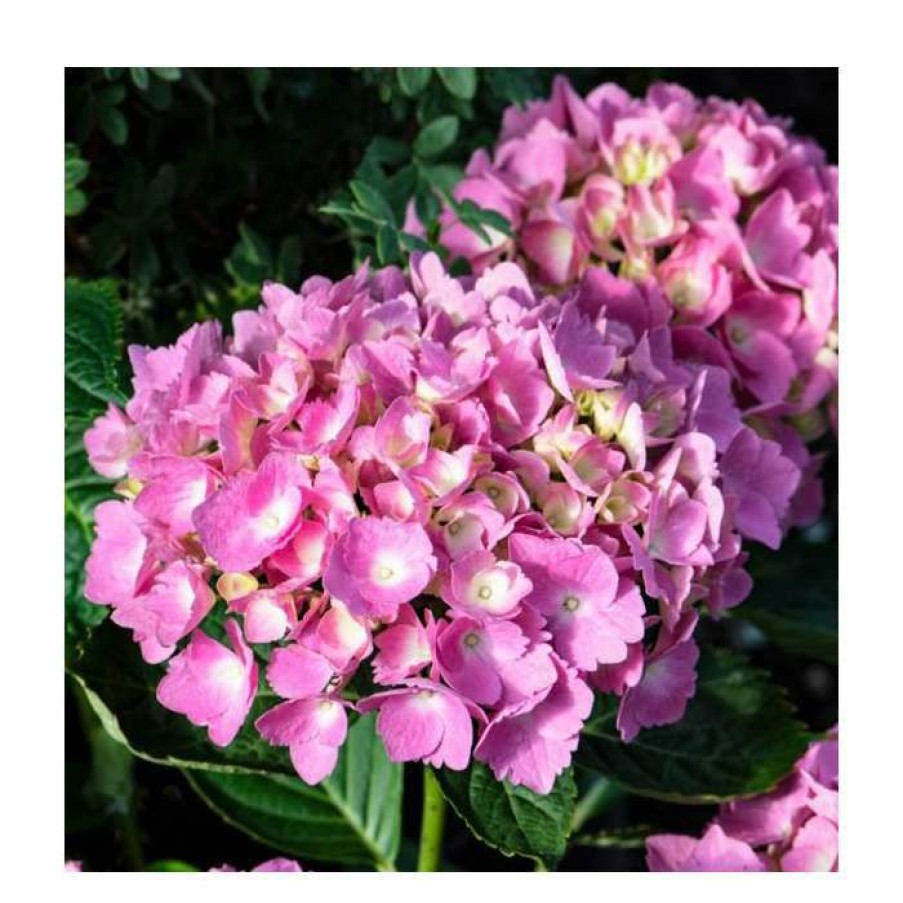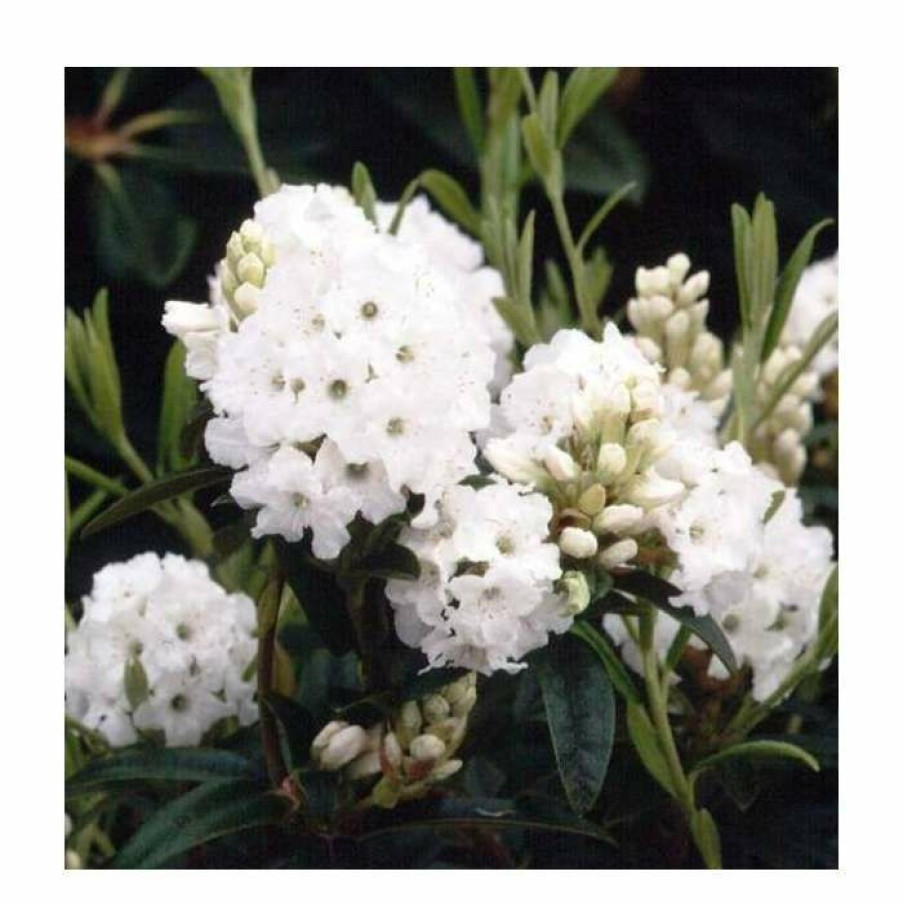Ornamental Shrubs * | Hydrangea Magical Amethyst ‘Rose’ | 5L Pot
$24.56 $15.12
Ornamental Shrubs * | Hydrangea Magical Amethyst ‘Rose’ | 5L Pot

Clusters Of Ever-Changing Flowers, Present Throughout Summer…
Part Of The Magical Series, Hydrangea ‘Magical Amethyst Rose’ Will Form Clusters Of Dainty Open Flowers, Which Start Off Green, Before Gradually Maturing To A Soft Rose Colour. As They Near The End Of Their Display, These Pretty Flowers Will Once Again Sport Their Initial Lime Green Shade. So If You Are After An Ever-Evolving Floral Display, This Mophead Hydrangea Will Make A Magnificent Addition To Your Garden! Requiring Only A Little Pruning In Spring, This Robust Variety Is An Ideal Choice For The Less Experienced Gardener, Where It Will Grow Beautifully In A Pot, Adorning Your Patio Space All Summer Long.
Plant Information
Your Plant’S Eventual Size Can Depend On Both Environmental And Genetic Conditions.
Features
Grown By A Trusted Nursery Perfect Gift For A Loved One Great For Being Grown In Pots An Abundance Of Colourful Blooms Delivered In Secure Packaging About Your Plant Planting Requirements Planting Guide Planting EssentialsThe Key Is To Regularly Water Newly-Planted Plants, At Least Bimonthly For Two Months. It Is Also Important To Ensure Adequate Spacing Between Plants, Which Is Determined By A Variety’S Eventual Height And Spread.
Bare Root And Containerised Plants Have Differing Planting Requirements. With Bare Root, It Is Important To Soak The Roots In Water For Up To Two Hours Before Planting, And With Containerised Plants, You Should Drench Their Rootball. For Bare Root Plants, It Is Also Beneficial To Prune Any Woody Roots Back A Few Inches, And If You Have A Containerised Plant, You Should Free Any Spiralized Roots That Are Growing Around The Rootball’S Circumference. When Planting, Bare Root Plants Need A Graft Point That Is Above The Soil, But For Containerised Plants, It Is Better To Have Their Pot Sitting No Less Than An Inch Below The Ground.
Bare Root And Containerised Plants Also Share Some Of Their Planting Needs; Dig A Hole Twice The Radius Of The Rootball, And Fill The Hole With A Mix Of Compost And Garden Soil. After This, Add Fertiliser And Mycorrhizal Fungi. After Providing A Generous Watering, You Can Finish With A Later Of Mulch, But Keep It From Touching Your Plant’S Stems.
Apply Fertiliser And Replace Decomposed Mulch Come Spring. Collect Fallen Leaves In Autumn.
Click Here To Read More
Your Hydrangea Will Be Dispatched Directly From Our Trusted Nursery. This Means That You Will Receive A Nursery Fresh Plant Which Was On The Growing Table One Day, And At Your Door Shortly After. Your Plant Will Be Carefully Packaged Into A Specially Designed, Extra Thick Cardboard Box. This Will Hold The Plant Securely In Place, And Is Sent Via A Delicate Courier Network To Prevent Any Chance Of Damage In Transit.
Hydrangeas Are Easy To Grow, But Their Flowering Can Be Affected By Soil Ph. Below We Address Some Common Queries:
Position: Hydrangea Plants Prefer Full Sun, But Will Suffice In Dappled Shade. If You Are To Plant In Full Sun, Be Sure To Apply Mulch, Which Will Help Trap Moisture. This Is Important As Hydrangeas Are Quick To Suffer From Insufficient Watering.
Soil Ph: Hydrangea With Blue Or Pink Flowers Will Change In Colour Depending On The Soil’S Ph (Flowers Will Turn Blue In Acidic Soils, And Pink In Alkali Soils). You Can Increase The Acidity Of Your Soil By Watering With Rainwater And Using Pine Needles, And Using Conifer Bark Or Ericaceous Compost As Mulch. You Can Also Increase The Alkalinity By Using Mushroom Compost As Mulch Or Adding Pulverised Calcium Carbonate.
Soil Types: It Is Important To Avoid Waterlogged Soils, As These Can Starve A Plant Of Oxygen.
Planting In Pots: Planting In Pots Is Recommended If Your Soil Is At The Wrong Ph As Maintaining A Ph In A Garden Soil Can Be Challenging. Planting With Ericaceous Or Mushroom Compost Will Help Boost Acidity And Alkalinity Respectively. Soil Nutrients Will Deplete Over Time, So Adding Fertiliser Will Help Ensure Good Flowering. Our Nursery Staff Will Change The Soil Annually To Help Achieve A Floriferous Display.
Hardiness: The Most Popular Hydrangea Species (Macrophylla And Paniculata) Come From Temperate Regions, And Are Therefore Well Suited To The Uk’S Climate.
Image Gallery
Be the first to review “Ornamental Shrubs * | Hydrangea Magical Amethyst ‘Rose’ | 5L Pot” Cancel reply
Related products
Flowering Shrubs
Ornamental Shrubs * | 1Ft Rhododendron ‘Golden Torch’ | 3L Pot | Rhododendron Yakushimanum
Flowering Shrubs
Ornamental Shrubs * | 1Ft Rhododendron ‘Fantastica’| 3L Pot | Rhododendron Yakushimanum
Flowering Shrubs
Ornamental Shrubs * | 1Ft Rhododendron ‘Golden Gate’ | 7.5L Pot | Compact Rhododendron
Flowering Shrubs
Ornamental Shrubs * | 1Ft Rhododendron ‘Tortoiseshell Orange’ | 7.5L Pot | Compact Rhododendron
Flowering Shrubs
Ornamental Shrubs * | 1Ft Rhododendron ‘Nancy Evans’ | 3L Pot | Rhododendron Yakushimanum
Flowering Shrubs
Ornamental Shrubs * | 1Ft Rhododendron ‘Lumina’ | 3L Pot | Rhododendron Yakushimanum
Flowering Shrubs
Ornamental Shrubs * | 2Ft Deciduous Azalea ‘Chanel’ | 5L Pot
Flowering Shrubs
Ornamental Shrubs * | 1Ft Dwarf Rhododendron ‘Arctic Tern’ | 3L Pot















Reviews
There are no reviews yet.